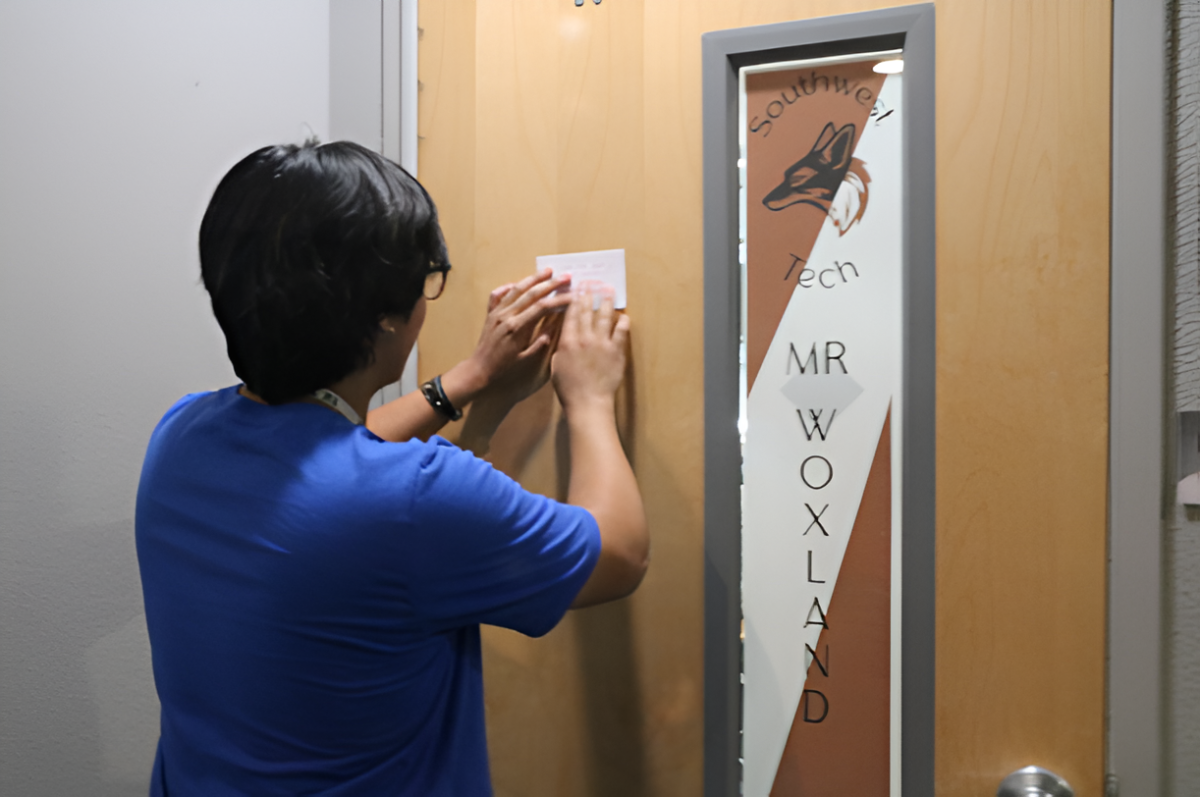On April 6, 2011, Clark County School District Chief Financial Officer Jeff Weiler revealed the revised recommendations for the 2012 fiscal year budget. The original recommendations were presented during the March 24 Board of Trustees meeting. These new revisions identify fewer cuts than the original proposal.
The original recommendations cut $411 million dollars eliminating 2,486 positions. The revised recommendations eliminate $407.4 dollars and eliminate 1,834 jobs.
Four aspects of the tentative budget changed over the span of almost two weeks, with the most drastic change being the elimination of the proposed 7.8% salary cut for all employees. In place of this, CCSD officials have proposed implementing the use of furlough days, equivalent to a 5% pay cut for all district employees. For example, a teacher that works nine months would incur eight furlough days, or unpaid days off, in which teachers would require substitutes to fill their position for those days.
Another item on the tentative budget that changed was employees assuming 20% of the cost paid by the district on the employees’ behalf, for a total of $107.78, instead of the previous 12%. This must be bargained with the unions before it can be placed into the final budget.
Class sizes will now increase by three students, instead of the previously proposed seven students for secondary schools.
“If it’s between increasing class sizes or cutting clubs and block scheduling, I’d pick the increase,” states junior Tyler Ferrer.
School textbook and supply budgets will decrease by 50%, which could be equal to $174,000 at the high school level.
“In our AP U.S. History class, all of us are sharing a supply of 10 books. Cut that by 50% and we’re left with five. How are we supposed to learn in the best way if our resources are being cut?” questions junior Adrienne Lapid.
Special Education Facilitators, English Language Learner Facilitators, Educational Computer Specialists, and Literacy Specialists reduction is proposed at a 25% reduction, or approximately 187 positions.
“I am not clear on how comprehensive campuses will be able to function without a Special Education Instruction Facilitator. When I was the SEIF at a comprehensive campus, I was responsible for 367 students with IEPs, federal/state/CCSD legal compliance files, classroom accommodations and modifications, discipline, and special programs for students and graduation of special education students. How can this possible be accomplished without this position?” comments Learning Strategist Miriya Julian.
CCSD is maintaining their first recommendations of consolidating bell times, increases in retirement contributions, cutting non-school administrative departments by 20%, freezing salary steps and educational increments, and eliminating 62 counselors and school-based support staff. However, there remains to be $69.1 million dollars in cuts to be determined.
For the meantime, Career and Technical Academy busing is safe, along with block scheduling. CCSD ensured its Student Advisory Committee that they are looking into additional sources of revenues online and through advertising.
The final budget must be approved by May 18.



![Practicing the basic skills of nursing, sophomore Natalia Yancey gets her heartbeat checked with a stethoscope. Sophomore nursing students reviewed skills from freshman year. “I’ve always wanted to be in the medical field; it’s been my dream forever,” Yancey said. “Doing [practice skills] so early on is not only an amazing opportunity, but it helps me to prepare for my future.”](https://southwestshadow.com/wp-content/uploads/2025/10/IMG_9843-1200x800.jpg)


